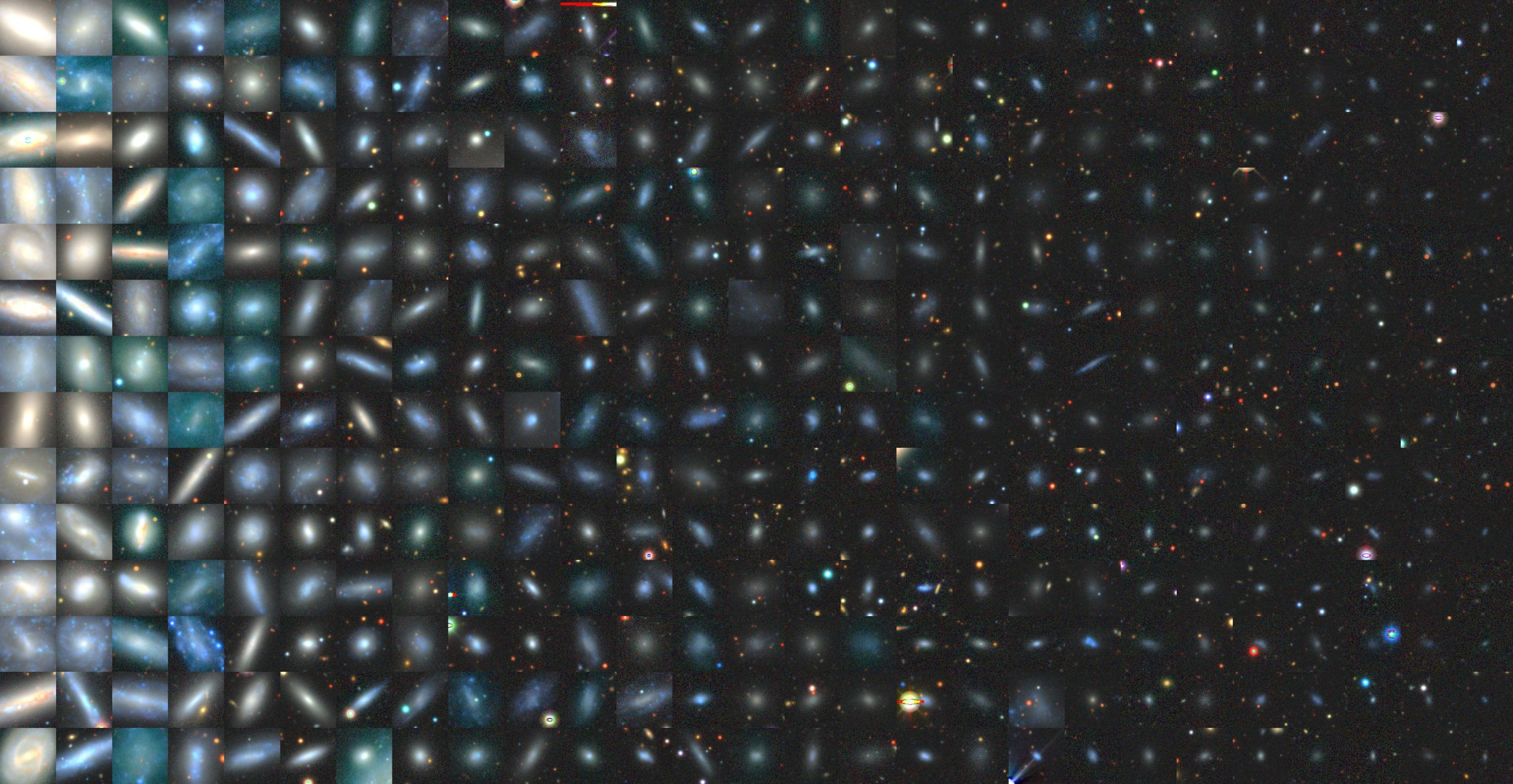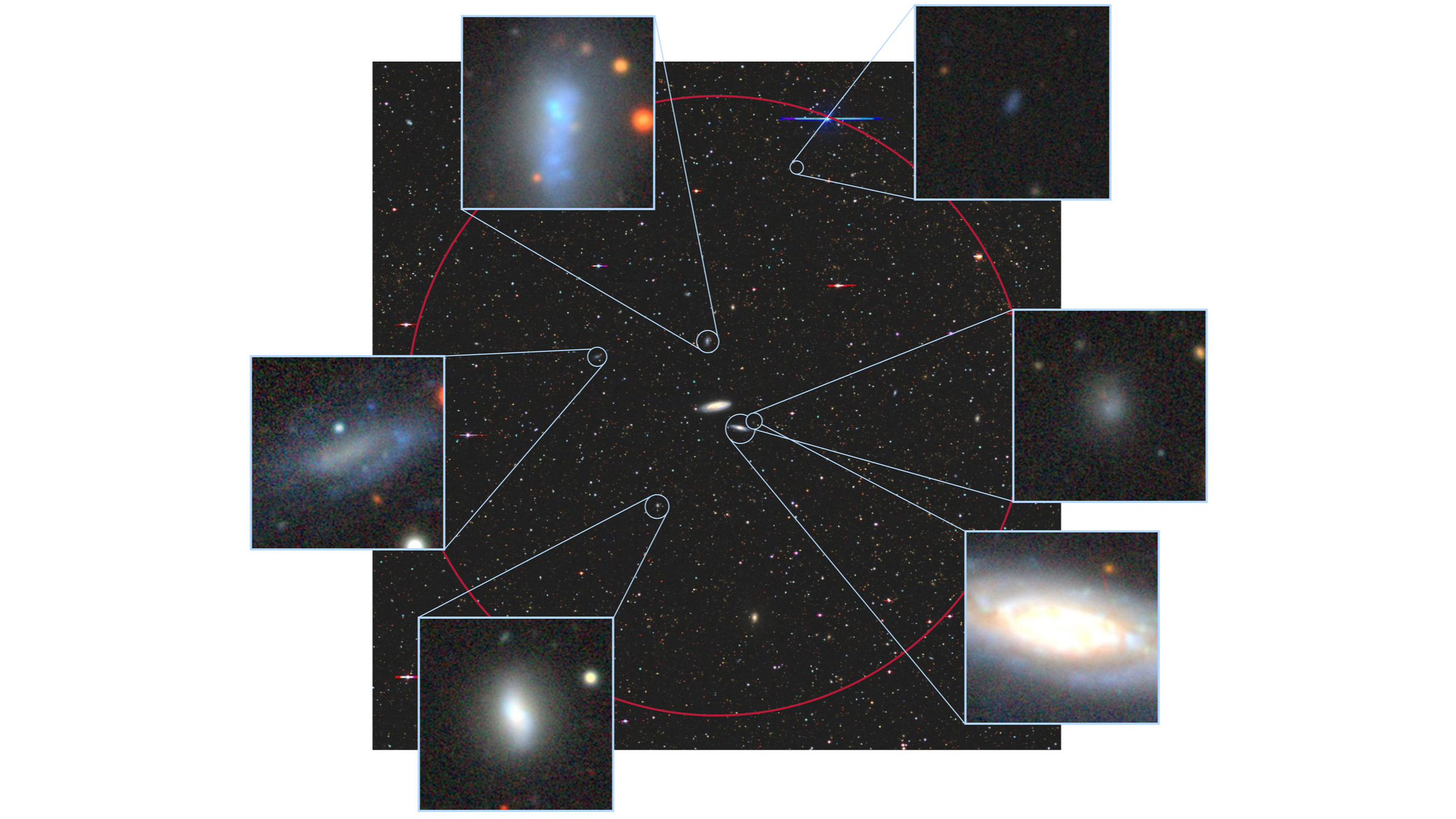The Milky Way's 2 biggest satellite galaxies are oddly lonely, study finds
Where are all the Milky Way's missing satellites?

The Milky Way's system of small, orbiting satellite galaxies is quite unusual, a new 12-year study of other galaxies in the local universe has found.
The Satellites Around Galactic Analogs (SAGA) survey is being conducted by a small group of astronomers to learn how the Milky Way and its little retinue of dwarf satellite galaxies compares to other galaxy systems.
"The Milky Way's satellite population is a unique combination of small satellites containing only older stars, and its two largest satellites, which are actively forming new stars," says Marla Geha, who is a professor of astronomy and physics at Yale University and co-founder of SAGA, in a statement.

Those two largest satellites are the Large and Small Magellanic Clouds, known as the LMC and SMC in shorthand. These two satellites are far and away the largest in the Milky Way's family and are readily visible to the naked eye from the Southern Hemisphere. Most of the other 59 known satellite galaxies of the Milky Way are exceedingly faint, requiring the Hubble Space Telescope or large ground-based telescopes to detect them.
Related: Milky Way galaxy: Everything you need to know about our cosmic neighborhood
SAGA conducted a census of 101 galaxies similar in size and mass to our Milky Way, playing host to 378 satellite galaxies in total. The number of visible satellite galaxies per host galaxy ranged from 0 to 13. This is compared to the Milky Way, where SAGA (using data from the Dark Energy Spectroscopic Instrument, DESI) on the Mayall Telescope at Kitt Peak National Observatory in Arizona could detect only four satellites. The rest of our galaxy's satellites are simply too faint for DESI to see.
"The Milky Way appears to host fewer satellites if you consider the existence of the LMC," said Yao-Yuan Mao, of the University of Utah and also a SAGA co-founder, in a statement.
Get the Space.com Newsletter
Breaking space news, the latest updates on rocket launches, skywatching events and more!
That's because the trend discovered by SAGA is for host galaxies to feature more satellite galaxies in general if they also have at least one Magellanic-type galaxy orbiting them.
However, galaxies without Magellanic-types do tend to have fewer satellites. One explanation is that the Magellanic Clouds are recent additions to the Milky Way's family. For example, research back in 2007 by Gurtina Besla, now at Steward Observatory in Arizona, found that the Magellanic Clouds are first-time visitors, snagged by our Milky Way's gravity in the last three billion years and trapped in orbit. So before the Magellanic Clouds arrived, the Milky Way wouldn't have been expected to have many bright satellite galaxies, based on the trends observed by SAGA. The assumption is that other Magellanic-type galaxies in other systems formed around their host galaxy.
Plus, Magellanic-type galaxies are quite rare in and of themselves. Previous research in 2012 led by Aaron Robotham of the University of Western Australia, as part of the Galaxy and Mass Assembly (GAMA) survey, concluded that only 3% of spiral galaxies similar to the Milky Way had Magellanic Cloud-type satellites.
In what is the final data release from SAGA (the first two batches of data from the project were produced in 2017 and 2021), astronomers also learned other things about dwarf satellites. It found, for example, that the closer a satellite galaxy is to its host galaxy, the more likely that satellite's star-formation rate will be zero, or close to it. The closer to the host galaxy, the more deeply ensconced the satellite is in the host's gravity well and dark matter halo, and the closer it is to any radiation poured out by hot, young stars or supernova explosions that can remove star-forming gas from an orbiting satellite galaxy.
Astronomers call the cessation of star formation in a galaxy "quenching," and SAGA's findings directly connect quenching to the environment around the host galaxy. Most of the Milky Way's satellite galaxies have been quenched, and that's at least partly why they are so faint — because they haven't managed to form many stars. SAGA's results also imply that quenched galaxies should be in more isolated environments, rather than in systems that are crowded with other satellite galaxies that they could interact with, stirring up more star formation within them.
Related: What is a galaxy?
But what does any of this really mean? Dwarf satellite galaxies exist within the huge halo of dark matter that surrounds all large galaxies. This halo acts as the gravitational scaffolding for the formation of those galaxies. Dwarf galaxies are the building blocks of their larger host galaxies; the model of hierarchical galaxy formation described by the Standard Model of cosmology, in which larger galaxies are assembled from small galaxies, predicts that there should actually be many more dwarf satellites around the Milky Way than we currently detect. Where these missing galaxies are remains a mystery, but by sampling and studying dwarf galaxies around other galaxies, we can learn about the dark matter haloes around other galaxies, their influence on galaxy formation and evolution, and where small satellite galaxies might be hiding.
There are three new research papers describing SAGA's findings, led by Geha, Mao and Risa Wechsler of Stanford University in California. The papers have been accepted for publication in The Astrophysical Journal and are currently available as pre-prints: the Mao-led paper on the unusualness of the Milky Way, the Geha-led paper on the satellite quenching, and a third paper about modeling the data.
Join our Space Forums to keep talking space on the latest missions, night sky and more! And if you have a news tip, correction or comment, let us know at: community@space.com.

Keith Cooper is a freelance science journalist and editor in the United Kingdom, and has a degree in physics and astrophysics from the University of Manchester. He's the author of "The Contact Paradox: Challenging Our Assumptions in the Search for Extraterrestrial Intelligence" (Bloomsbury Sigma, 2020) and has written articles on astronomy, space, physics and astrobiology for a multitude of magazines and websites.









